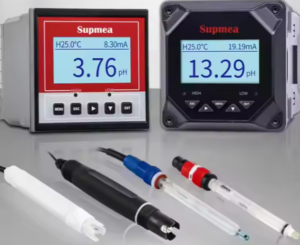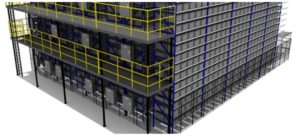Solution Architecting in a Complex Landscape for a global MRO supply chain
The Situation
ElectroComponents plc, an omni-channel provider of products and services for designers, builders and maintainers of industrial equipment and operations. In this Maintenance & Repair Operations (MRO) engineering marketplace they serve over 1 million customers in more than 80 countries.
The company continues to grow through acquisition and key competency is the supply chain distribution of products and services including electronic components, electrical, automation and control, and test and measurement equipment, and engineering tools and consumables, sourced from 2,500 suppliers.
ElectroComponents plc needed a Solution Architect with expertise in systems landscapes required for multi-channel customer order management, procurement and supply chain fulfilment during a wider and significant transformation program (“Destination 2025”), I was deeply involved in two critical, interconnected initiatives: the Non-Stock Extended Range Project and the Delivery-to-Promise (DTP) Project.
The business aimed to drastically expand its non-stock product offering (from 1 million to 10 million items) to capture a larger market share. This expansion, however, presented a significant challenge to our order fulfilment process, particularly in providing accurate and reliable delivery promises to our multi-channel customer base. Customers ordering non-stock items faced potentially longer and more variable lead times compared to stocked products, demanding a robust DTP solution.
The Task
His primary responsibility within the DTP project was to define and manage the solution architecture for a new customer order Delivery Promising capability. This involved leveraging SAP Global Available-to-Promise (GATP) with rules-based scheduling, integrating it seamlessly with our digital channels and other relevant applications.
The core challenge was to design a system that could accurately quote delivery dates across all channels, considering the complexities of non-stock sourcing, component availability, and delivery logistics, ultimately ensuring we met the “promise” made to our customers. This was particularly crucial for the project to expand the non-stock range, where lead times were less predictable.
The Action / Approach
He spearheaded the solution architecture design, working closely with business stakeholders, SAP consultants, and integration specialists. This involved:
* Deep Dive Analysis: He conducted extensive workshops to understand the intricacies of the expanded non-stock order fulfilment process, identifying key constraints and dependencies across sourcing, warehousing, and transportation.
* SAP GATP Configuration: He assisted in solution architecture to the rules-based scheduling within SAP GATP to accommodate the unique characteristics of non-stock items. This included defining rules for availability checks across potential sourcing locations, incorporating realistic lead times, considering transportation lanes, and establishing fall-back options or alternative product suggestions when necessary.
* Multi-Channel Integration: He designed the integration architecture to ensure seamless flow of information between our digital platforms (web, mobile), SAP GATP, and other relevant systems like BlueYonder and PMS Riversands. This ensured that the delivery promise quoted to the customer was consistent and accurate regardless of the channel they used.
* Transparency Focus: Recognising the longer lead times for non-stock items, he ensured the solution design prioritised clear communication to customers. This involved incorporating mechanisms to display estimated delivery dates prominently during the initial order promising journey leading to specific order placement and final delivery promise. This included mechanisms for customer relationship management CRM by exception during the fulfilment process and providing timely updates on order status and revision of order promise dates prior to delivery.
* Design Authority Leadership: He provided guidance and expertise to the development teams, ensuring adherence to the architectural vision and addressing any technical challenges that arose during implementation. He also collaborated closely with the Group Chief Architect and senior architecture team members to align the DTP solution with the overall enterprise architecture strategy.
The Result
The following results were achieved:
The successful implementation of the SAP GATP rules-based scheduling for DTP significantly improved our ability to provide accurate and reliable delivery promises for both stocked and, crucially, the newly expanded non-stock product range.
Initial go-live R1 release from mid-2024 provided substantial benefits such as those highlighted below:
- More Accurate Delivery Commitments: Customers received more realistic delivery dates at the point of order, building trust and managing expectations effectively, especially for the potentially longer lead times associated with non-stock items.
- Improved Order Confirmation: The system could quickly confirm order feasibility and provide a reliable delivery timeframe based on real-time data and predefined rules.
- Enhanced Transparency: Customers benefited from clearer visibility into the delivery process, potentially receiving more accurate updates on their order status.
- Reduced Delays and Exceptions: By proactively considering constraints and optimising scheduling, the solution helped minimise potential delays and disruptions, leading to a smoother order fulfilment process.
- Increased Customer Satisfaction: The improved reliability and transparency in delivery promises contributed to a more positive customer experience, particularly crucial for the successful adoption of the expanded non-stock offering.
My overall resulting contribution as the Principal Solution Architect was instrumental in enabling Electrocomponents to confidently expand its product range while maintaining and even enhancing customer satisfaction through a robust and reliable Delivery-to-Promise capability. This was a critical step in achieving the strategic and widely publicised objectives of the “Destination 2025” program.








